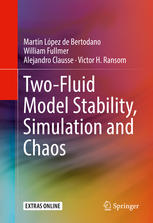

Most ebook files are in PDF format, so you can easily read them using various software such as Foxit Reader or directly on the Google Chrome browser.
Some ebook files are released by publishers in other formats such as .awz, .mobi, .epub, .fb2, etc. You may need to install specific software to read these formats on mobile/PC, such as Calibre.
Please read the tutorial at this link: https://ebookbell.com/faq
We offer FREE conversion to the popular formats you request; however, this may take some time. Therefore, right after payment, please email us, and we will try to provide the service as quickly as possible.
For some exceptional file formats or broken links (if any), please refrain from opening any disputes. Instead, email us first, and we will try to assist within a maximum of 6 hours.
EbookBell Team

5.0
20 reviewsThis book addresses the linear and nonlinear two-phase stability of the one-dimensional Two-Fluid Model (TFM) material waves and the numerical methods used to solve it. The TFM fluid dynamic stability is a problem that remains open since its inception more than forty years ago. The difficulty is formidable because it involves the combined challenges of two-phase topological structure and turbulence, both nonlinear phenomena. The one dimensional approach permits the separation of the former from the latter.The authors first analyze the kinematic and Kelvin-Helmholtz instabilities with the simplified one-dimensional Fixed-Flux Model (FFM). They then analyze the density wave instability with the well-known Drift-Flux Model. They demonstrate that the Fixed-Flux and Drift-Flux assumptions are two complementary TFM simplifications that address two-phase local and global linear instabilities separately. Furthermore, they demonstrate with a well-posed FFM and a DFM two cases of nonlinear two-phase behavior that are chaotic and Lyapunov stable. On the practical side, they also assess the regularization of an ill-posed one-dimensional TFM industrial code. Furthermore, the one-dimensional stability analyses are applied to obtain well-posed CFD TFMs that are either stable (RANS) or Lyapunov stable (URANS), with the focus on numerical convergence.